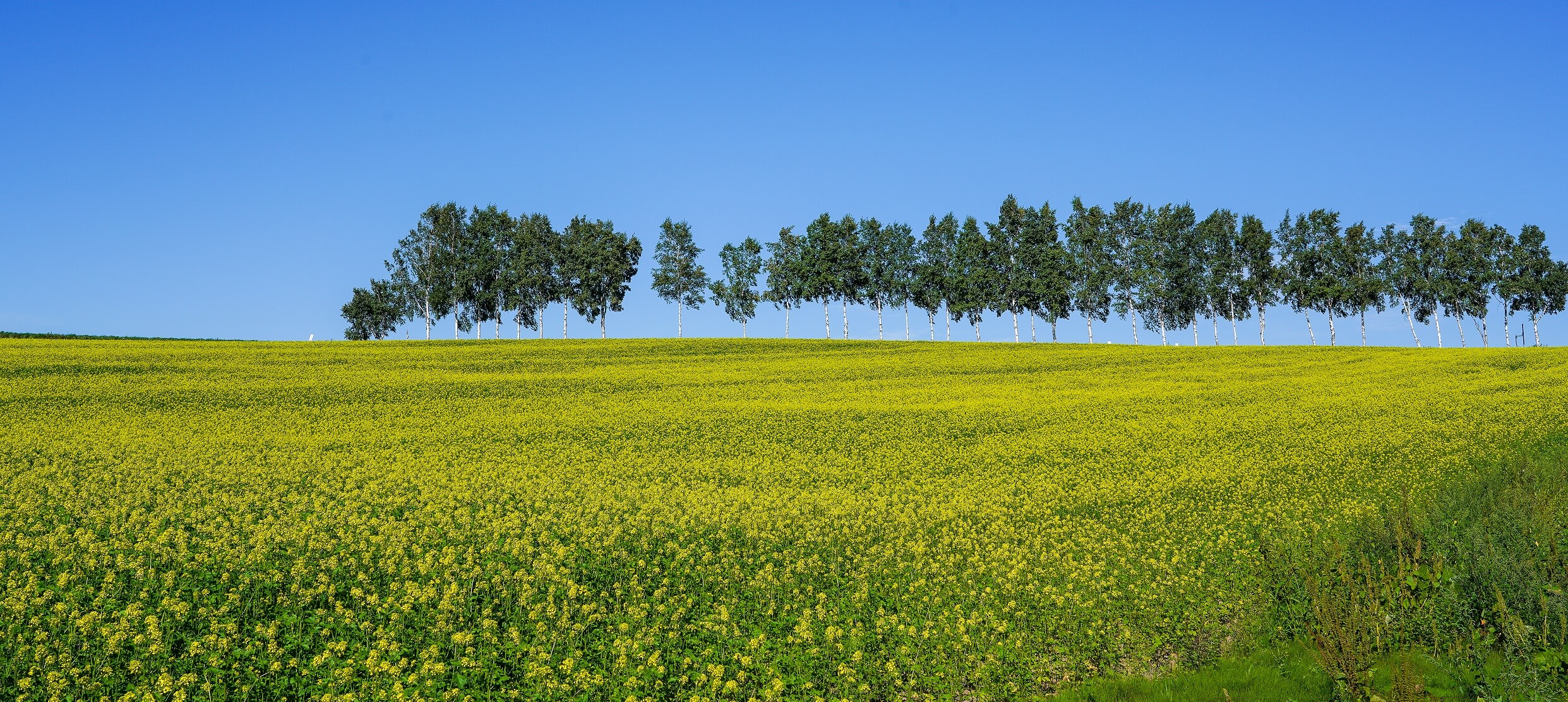
Mustard Green Meadows
○A Request from the People of Biei○
Please never ever set foot inside mustard green or sunflower fields.
Please only ever take photographs from paved roads.
Dirt roads next to the fields are also part of private agricultural land and are out of bounds to both cars and people.
You can take plenty of beautiful pictures from the asphalt. We politely ask for your understanding and cooperation.
Check out our Biei Tourism Etiquette movie, "The Secret of the Yellow Flower Meadows" to learn more.
During Biei's autumn, yellow fields are dotted about everywhere.
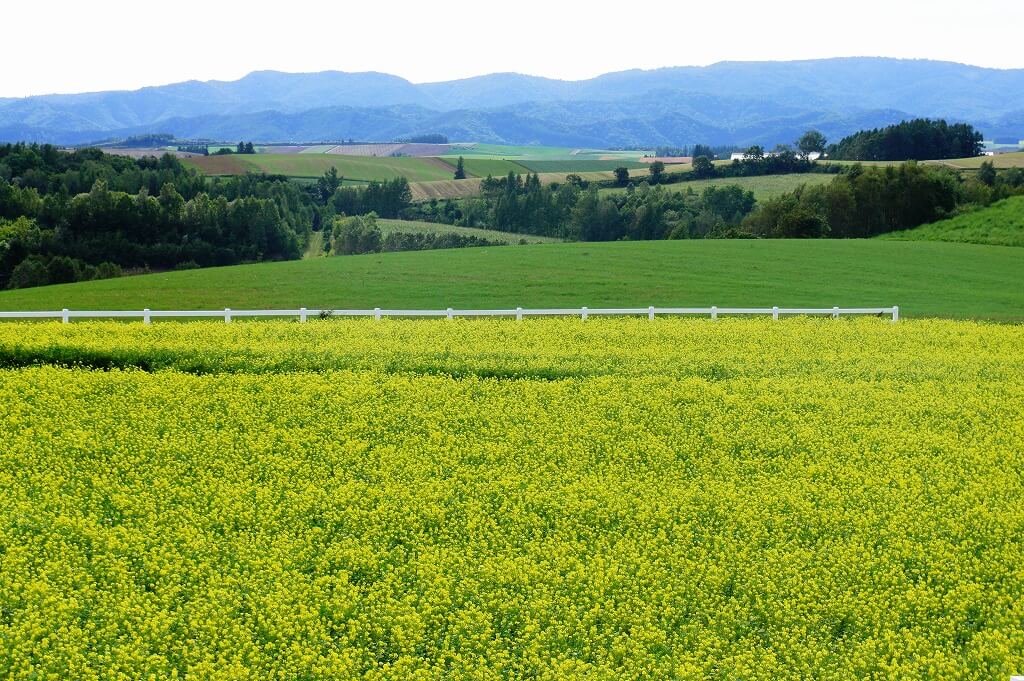
In this photo, we can see mustard green flowers.
They resemble rapeseed blossoms and have a pale yellow colour with a slight green tinge.
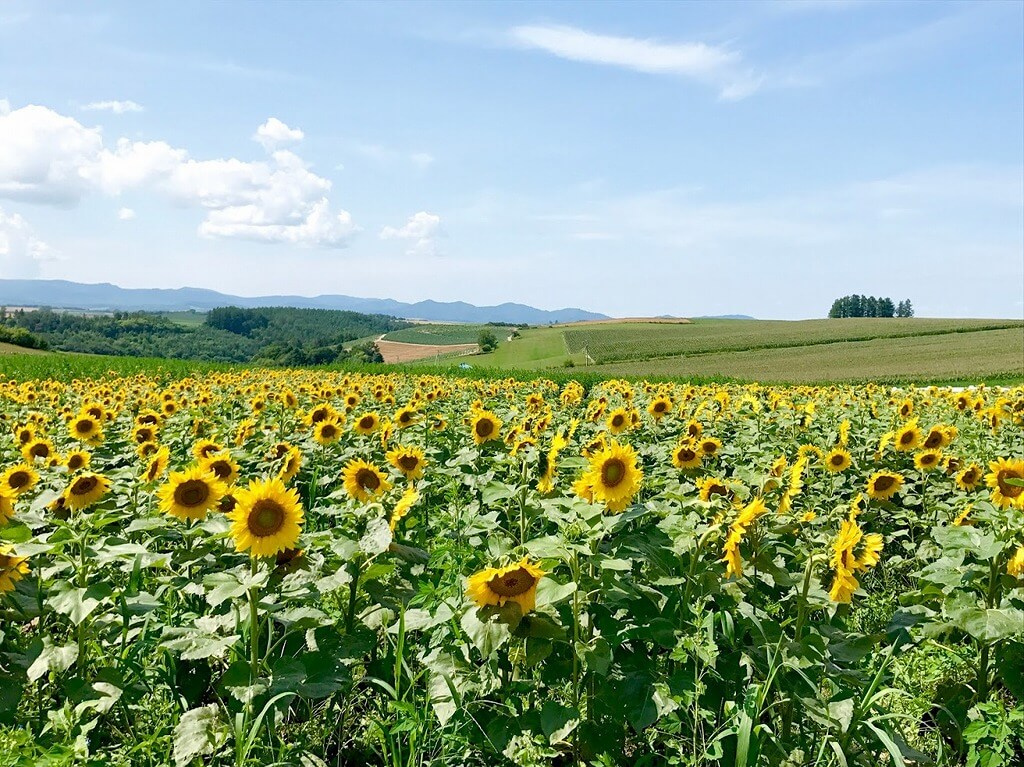
That well-known flower, the sunflower, is also in bloom during this time of year.
If you are out exploring Biei's hills in autumn, meadows such as these mustard green meadows or sunflower meadows suddenly appear before your very eyes. This is not uncommon!
But why are these yellow flowers in full bloom now, even though it's not summer?
Well, that has much to do with Biei's farming cycle...
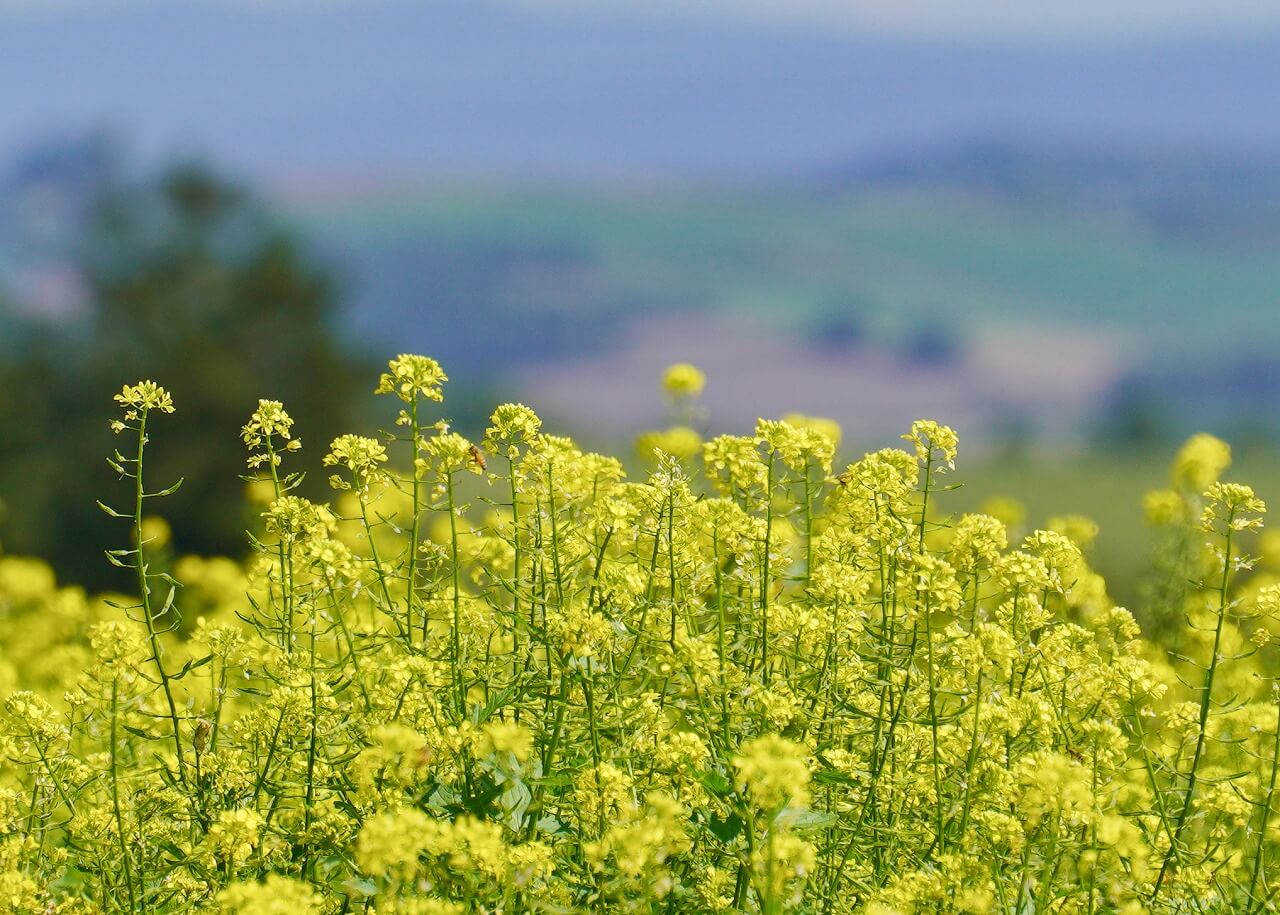
These yellow flowers are not planted for our visual appreciation, but are in fact plants known as "green manure".
As its name would suggest, green manure is fertiliser made from plants grown for the very purpose of being returned to the soil as nourishment.
Both sunflowers and plants of the Brassicaceae family like mustard greens are plants that are raised to be rich in nutrients, as they are often used to create plant-based oils.
As Biei's hills were created from volcanic matter, there is a lot of sand-like white soil which is good for water drainage but quite low in nutrients.
Because of this, "green manure" such as these plants are grown and are ploughed back into the earth, thereby bolstering the nutritional content of the field's soil.
By "ploughed into", we mean that once these prettily-blooming yellow flowers reach their peak blooms, they are unfortunately squished into the earth just as they are!
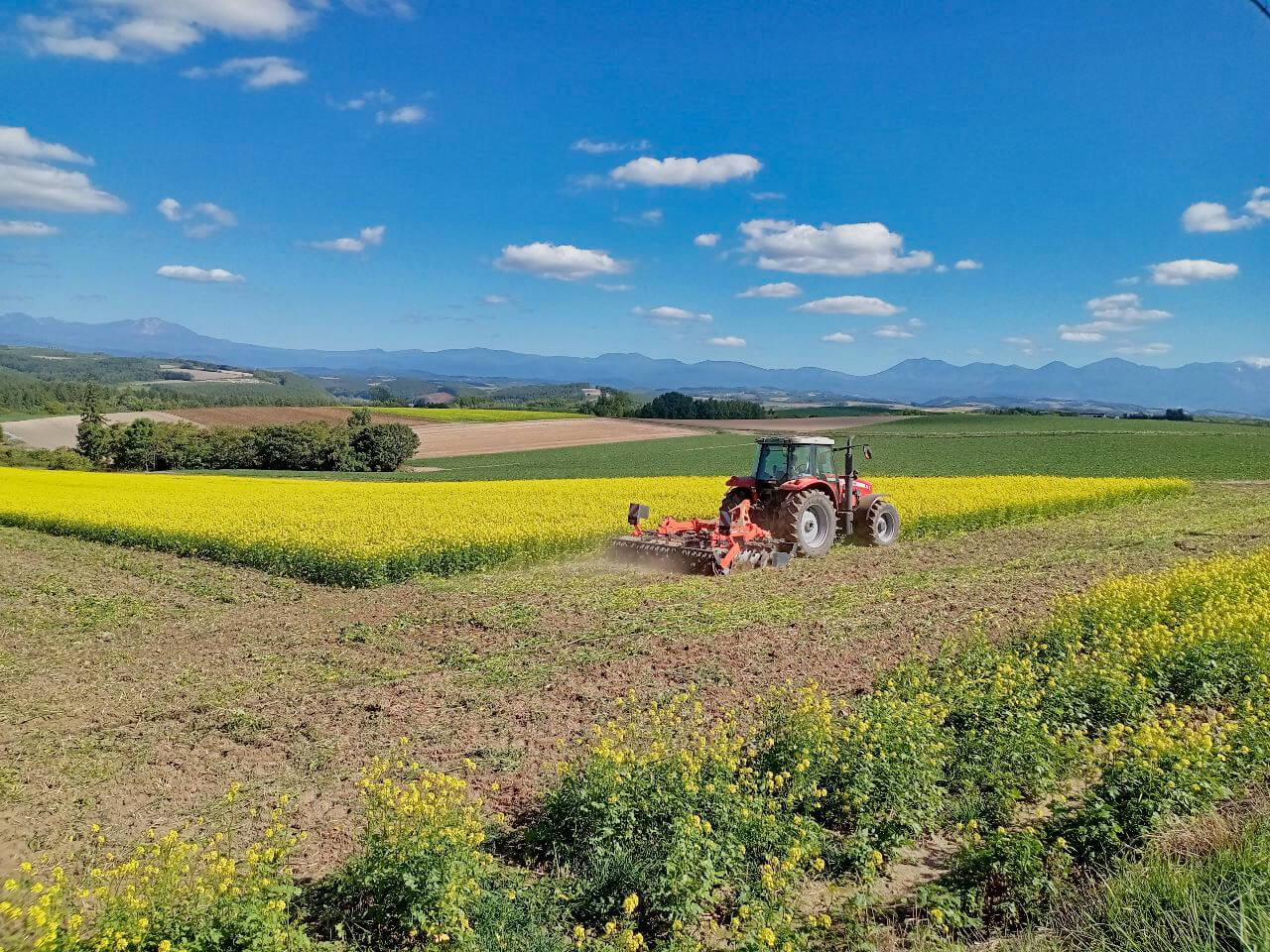
Flowers in full bloom being squished into the soil!
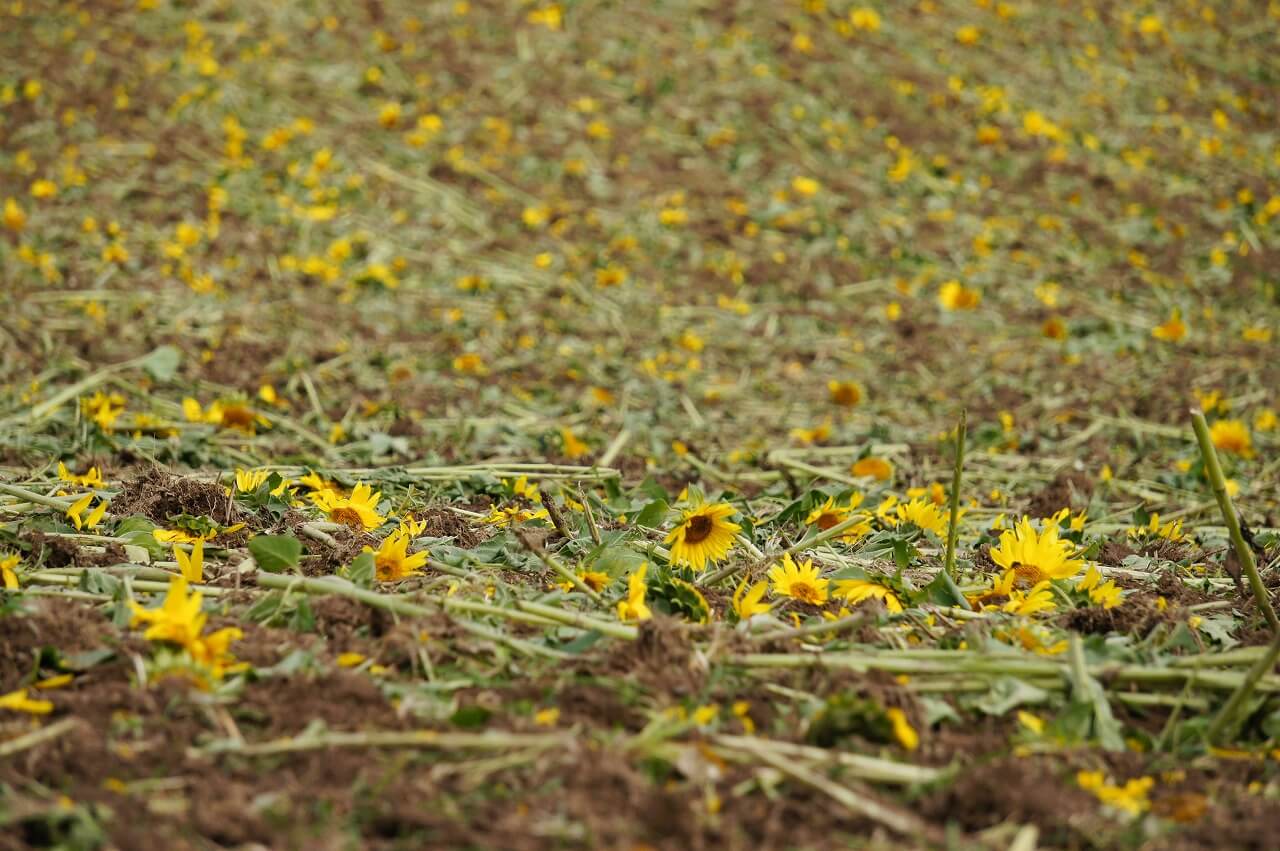
Sunflowers after being ploughed.
We're sure many of you must be thinking, "Argh! That seems such a waste!" or "I feel sorry for the poor flowers..." or "As they're blooming so beautifully, you might as well leave them until the flowers have withered!"
We hear you... but that is the fate awaiting "green manure".
They have a purpose- to be returned to the earth when they reach full bloom.
If you were to wait right up until the flowers wither, the flowers would turn to seed. If that were to happen, even after you planted another crop in that field, you'd find mustard greens and sunflowers mixed in and it would cause real problems for agricultural work.
Because of this, the farmers have to plough the flowers back into the soil before they have a chance to go to seed.
In other words, there's no choice but to return the flowers to the earth while they are in full bloom.
Sob...! It certainly is a sad fate, but that is the life's mission of "green manure".
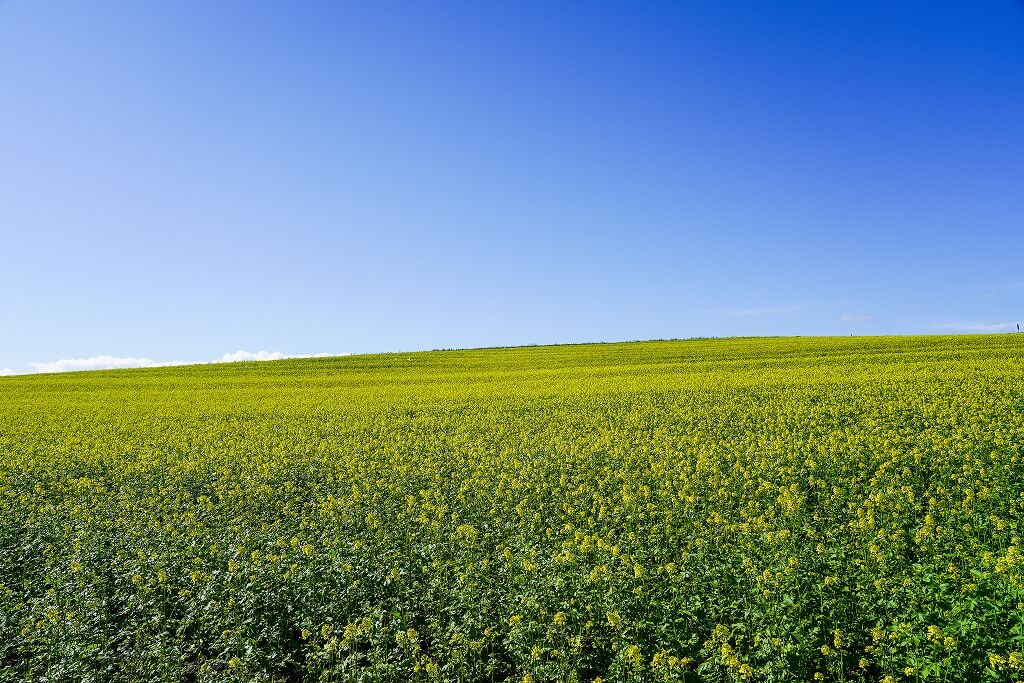
But back to our first question! Why do they bloom in autumn?
In Biei, the crop covering the largest cultivated area is wheat. Autumn-sown wheat is harvested around the end of July while spring-sown wheat is harvested in early August.
After the wheat has been harvested, hay bales are made and they are transported off to pastures. The seeds of mustard greens and sunflowers are sown after the hay bales have been taken away.
The flowers seem to bloom quickly, in just around a month and a half, so this is why the period lasting from halfway through September until halfway through October is precisely when yellow flower fields appear.
And that is just the way Biei's agricultural cycle rotates!
Everyone, should you find a yellow flower meadow during your visit, as well as marvelling at how pretty it is, we'd also be delighted if you could spare a thought for the farmers readying the soil in preparation for next year.
This beautiful hilly scenery is, after all, the fruit of farmers' hard work.
